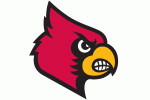Pitt basketball transfer Cam Johnson had numerous attractive options in terms of finding a new basketball home for next season. After announcing he was leaving the team, he's settled on the North Carolina Tar Heels.

Cam will transfer in conference, but as of now, Pitt has not budged on its stance of wanting him to sit out a year to do so. Johnson, though, is not backing down on this:
Johnson also told ESPN he is prepared to go the legal route if necessary.
— Jeff Goodman (@GoodmanESPN) June 6, 2017
And, according to Cam, North Carolina is pretty confident that he will able to play for them this season.
Johnson said he will head to Chapel Hill soon. He is optimistic he will be able to play for the Tar Heels -- who defeated Gonzaga on April 3 to win their sixth national championship in program history -- for the next two years.
"It's still in limbo, but Coach Williams and the staff are confident I will be able to play next year at North Carolina," he told ESPN. "I trust them."
Then there was this pretty funny line that any Pitt fan will recognize from the Todd Graham fiasco. One of the reasons for selecting the Tar Heels?
"I have family in the area."
The stance of restricting in conference transfers, of course, has been not only widely used at Pitt but at the majority of programs around the country. In-conference transfers do happen (as North Carolina fans love to point out on the Twitters and such, btw, that they allowed one in football) but they are rare.
So if it's Common, why the Outrage?
None of that, however, has led to the furor surrounding Cam's case dying down, primarily because it has been a high-profile situation involving a player whose stock has risen dramatically. Few people aside from Jay Bilas (who has been highly critical of Pitt over this) had done so much as batted an eye in the case of past transfer situations restricting such moves. But Cam's situation has drawn the ire of a lot of people because it's been in the news so much in the past few weeks.
Bilas' tweets ran over the course of several days and, while he later briefly criticized Duke for doing the same thing earlier this year in the case of quarterback Thomas Sirk the damage was done because he harped on for so many days. Did Bilas' piling on contribute to the piling on in general? Given the fact that he has more than two million followers, I'd argue it did. A lot.
The result? The story snowballed and it went from something that typically wouldn't draw much notice outside of the fanbases of the schools involved and became, ZOMG PITT IS A VILLAIN.
What's the Solution? All Schools Should Play by the Same Rules.
My stance on this is basically that everyone needs to play by the same rules. And, to his credit, Bilas wants the same thing.
This has been made out to be a Pitt problem when it is much greater than that. I can see both sides of the argument but what is needed is some sort of consensus across college athletics, regardless of whatever that stance is. Either players are restricted or they're not and in my mind, it shouldn't even come down to the schools making the decision. The players' argument (including Cam's) is that administrative personnel and coaches move on without restrictions so why shouldn't they? Fair, right? Of course it is. But if only some schools are allowing in-conference restrictions, that isn't fair.
Should Pitt concede here and allow him to play? I know that's what a lot of people want to see happen but, unless there's an NCAA ruling on it, it would also create a sticky situation for the school with regards to future transfers. If they do it for Cam, you have to do it for everyone. And if other schools aren't following suit and allowing the same sort of freedom, that puts Pitt at a disadvantage. Again, not fair.
He's a Graduate. Let Him Play!
Then, of course, there is the argument that Cam has graduated so he should be able to go where he pleases. That's fine and I not only understand the logic but can even agree with that. But it then must be a uniform standard across college sports and no such uniformity exists.
Bilas' beloved Duke even took things much further than Pitt did in the case of a recent graduate transfer. They blocked the aforementioned Sirk, who also had already graduated, from all ACC programs. And get this - Sirk not only could not go to ACC schools, but was banned from several other non-conference programs as well. Schools like Baylor, Northwestern, and Army. Oh, and North Carolina Central. Not North Carolina - North Carolina Central.
They blocked my man from a team in the freaking MEAC. Cold.
So, why would they not allow Sirk to go to such a small school? Simple. North Carolina Central, along with those other programs, makes up Duke's 2017 non-conference schedule. Schools not only routinely restrict players from going to conference opponents but even any other team they face, even if it's only once. Excessive? Maybe. I mean, if Pitt is playing Robert Morris in two years, it seems kind of silly to prevent a kid not playing here at all to go there. But it's something you see quite a bit. It wasn't because Duke feared him lighting up the MEAC. It was because they were facing them the next year on the field. Just a hunch here but I'm guessing this was less about disliking Sirk and more about it being protocol for their transfers.
Where was the outrage? The furor? It was nowhere to be found because, well (you know the answer by now) it's pretty common. But when national articles are popping up left and right on it, it's everywhere and you sure as heck aren't putting out that dumpster fire with a Dixie cup by that point.
Another argument that I've heard from others is that by allowing players to suit up in conference doesn't matter. You only see them one, maybe two times a year, right? Every conference matchup is important. Don't believe me? Just ask the softball team that finished over .500 and missed even getting into the ACC Tournament, despite finishing 21 games ahead of North Carolina State (a team that did get in) in the overall standings because of their in-conference work. Conference matchups are vitally important. Important enough to restrict transfers? That's another question. But the idea that it's only a game or two here or there falls flat with me.
So, Change the Rules
Fine! But, here's what you should know.
Even if we're implementing a rule barring any transfer restrictions, it still creates an unfair advantage to the better programs because you'll see in-conference transfers at a much higher rate. Schools that previously blocked them will not be able to do that so it stands to reason that you would see much more of that.
Also, the majority of them would likely be previously undiscovered players like Cam getting scooped up by the Dukes and Carolinas of the world. That, of course, already exists out of conference where you have mid-major players routinely going to better programs. It just usually doesn't happen in conference where you then have to suit up against said players. If you open that up, the non-elite programs get punished even more when the players have more options and really want to stick it to their former team.
Should they have more options and be able to do that? Maybe. I'm not making the argument that they shouldn't, I'm merely stating that they will.
Now, it should not go unsaid that Pitt's basketball program has itself benefited from getting transfers from lesser programs. Quite a bit, actually, since they've brought in so many transfers in recent years to help fill out rosters. One case I always come back to is that of Central Michigan's Trey Zeigler. Zeigler isn't the best example when you consider the little impact he had at Pitt. But he was a star at Central Michigan and the team's best player. He up and left, came to Pitt, and that was that. Pitt, like other major-conference programs, has really benefited from transfers coming aboard if only to create additional depth.
If the rules change, here's the likely result.
The top programs only get stronger. Them losing a kid that isn't playing to a lesser school doesn't really hurt their bottom line outside of major injuries or something like that. The middle-of-the-road majors (looking at you, Pitt) probably benefit a little and get harmed some. The bottom-feeders mostly suffer because, other than playing time, they have little to offer in the way of basketball-related substance.
Is it fair that college athletes should be responsible for keeping a competitive balance across the board. Not really. But by removing restrictions of any kind, there's little doubt in my mind that one result of that would be the rich getting richer and the poor getting poorer. Hence, bigger and more successful programs will be on board and the smaller ones won't.
In Summary: Pitt not to Blame
The rules are so wishy-washy on this because, well, there aren't any firm rules. Schools can handle this how they want and that's why Pitt shouldn't be blamed here. Why, after all, should Pitt remove all transfer restrictions in this case and going forward when other schools (even ones in the ACC like Duke) are not willing to do the same thing?
Legislation needs introduced to create some sort of guidelines on this. I know that most people hear 'NCAA' and 'more red tape' and immediately conclude it's overkill. But in some cases rules need to be developed and this is one of those times.
Either put a rule in place barring all restrictions for transfers or stop demanding that schools cannot exercise their right to block said transfers. It's that simple.
Be sure to join Cardiac Hill's Facebook page and follow us on Twitter @PittPantherBlog for our regular updates on Pitt athletics. Follow the author and founder/editor @AnsonWhaley.
















